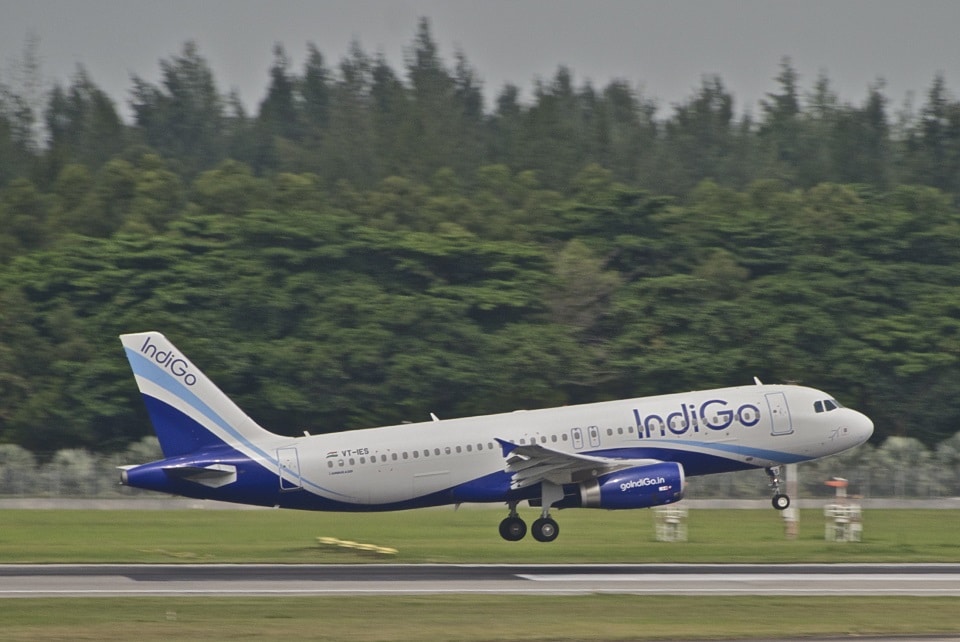Aviation
IndiGo’s Expansion Plan: Launching 7 New International Destinations

India’s largest airline, IndiGo, is poised to significantly enhance its global presence by adding seven new international destinations within the current financial year.
This expansion was announced by CEO Pieter Elbers during an event in New Delhi, marking the airline’s 18th anniversary of operations.
Currently, IndiGo operates over 2,000 flights daily, connecting approximately 120 destinations worldwide, including 33 international cities. The airline recently revealed plans to commence flights to Jaffna, Sri Lanka, marking its second destination in the country after Colombo.
Indigo connects to the US with new codeshare flights:Click here
affna will become IndiGo’s 34th international and 122nd overall destination, with bookings for this route having started on August 1, 2024.
With these new additions, IndiGo will expand its international network to over 40 destinations. The airline’s ambitious growth strategy also includes the introduction of business class service, aiming to cater to a broader spectrum of travelers and enhance its competitive edge in the aviation sector.
IndiGo is also preparing for long-term expansion with an order of 30 wide-bodied A350-900 aircraft, scheduled for delivery from 2027, and options for an additional 70 aircraft. This fleet expansion will support the airline’s efforts to boost international and intercontinental services.
Indigo Airlines: 7 Facts You Should Know:Click here
Currently operating over 400 routes, including 34 international destinations, IndiGo’s new route launches and the addition of business class service reflect its strategic vision to broaden its market reach and strengthen its position in the global aviation industry. indigo flight seat map
Recently, IndiGo has partnered with RECARO Aircraft Seating to enhance its upcoming A321neo aircraft with the award-winning R5 seats in business class. The RECARO R5 seats will provide advanced comfort with a 38-inch pitch and a customized ergonomic design, while also being lightweight and functional. In addition, the economy class will be equipped with RECARO R2 seats.
Deliveries of the aircraft are set to start in Q4 2024, and the installation of all business class seats is expected to be completed by the end of 2025.

Aviation
Airbus Plans Cockpit Toilet to Make Single-Pilot Operations a Reality

In a bold move aimed at cutting costs, Airbus is exploring the possibility of installing a potty-style toilet right behind the Captain’s seat on its A350 long-haul aircraft. According to the reports from paddleyourownkanoo.com
This proposal is part of the ongoing effort to implement Extended Minimum Crew Operations (eMCO), a concept that could revolutionize the aviation industry by reducing the number of pilots required on ultra-long-haul flights.
Air India Invests in Future Talent: 50,000 Staff to Be Trained at New Facility
Currently, on long flights, two pilots stay in the cockpit while the others rest in a separate compartment. However, under eMCO, one pilot could be alone in the cockpit for up to three hours while the other sleeps. The goal is to reduce crew costs and improve airline efficiency, as fewer pilots would be needed for these flights.
But this proposal has raised concerns from pilot unions, who worry about safety and the challenges of single-pilot operations. To address the issue of bathroom breaks, Airbus suggests installing a radio-equipped toilet in the cockpit, allowing the pilot to use it without leaving their seat.
UAE Visa: New Rules and Regulations – These Items Are Now Prohibited in the UAE
If the pilot needs to use the toilet, the second pilot would have to be woken up, terminating the eMCO process temporarily.
If successful, Airbus plans to begin testing this system on its A350 aircraft as soon as 2027, with single-pilot operations possibly being introduced on freighter Airbus A320s within the next five years.
-

 Aviation2 months ago
Aviation2 months agoMicrosoft Flight Simulator Raises $3 Million to Bring Back the An-225 Mriya
-

 Airlines2 months ago
Airlines2 months agoQatar Citizens Can Travel to the United States Without a Visa
-

 Defence2 months ago
Defence2 months agoWhich Country Has the Largest Fleet of Fighter Aircraft?
-

 Airlines1 week ago
Airlines1 week agoDAMAC Air: Dubai’s New Luxury Airline Offers Free Flights for Registration
-

 Airlines1 week ago
Airlines1 week agoAir India to Launch aircraft maintenance training institute in Bengaluru
-

 Airport2 months ago
Airport2 months agoWestern Sydney Airport Welcomes Its First Plane After 6 Years of construction
-

 Aviation2 months ago
Aviation2 months agoDid you know ? Once Boeing 747 carried 1088 passenger in 1991
-

 Travel1 week ago
Travel1 week agoThis country tops visa rejections in the popular Schengen countries








